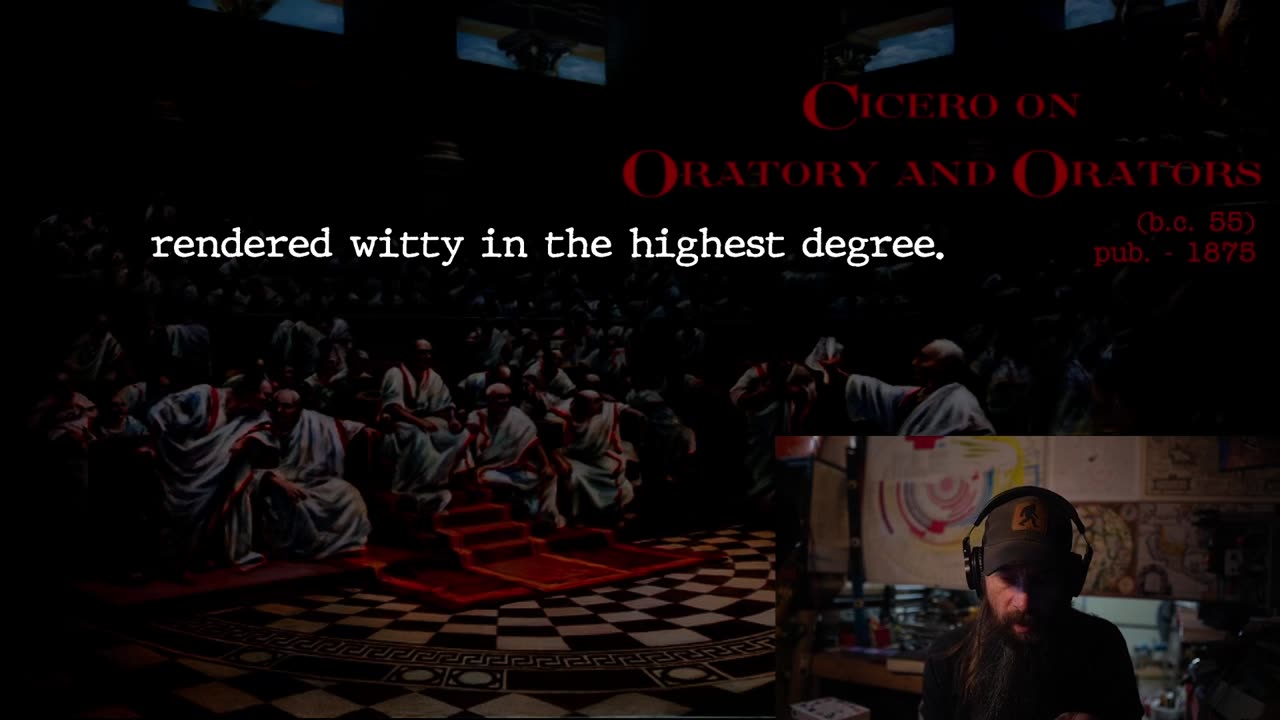Premium Only Content

Cicero on Oratory - B2 - LXIII LXIV
Cicero on Oratory - B2 - LXIII LXIV
The video discusses various forms of humor in oratory as explained by Cicero, focusing on wit, repartee, and language play. It illustrates how surprise and ambiguity enhance humor in speech, providing examples of clever wordplay and repartee from historical figures.
Key Points:
Types of Jokes
Cicero emphasizes that the most common type of joke revolves around our expectations being subverted, which leads to laughter. This humor can be further enhanced when ambiguity is introduced, making the jest more complex.
Repartee
A significant form of humor is repartee, where a speaker cleverly counters an opponent's remark with a sharp and witty response. Cicero gives examples of famous repartees that highlight the skill involved in this form of humor.
Ambiguity in Language
Cicero notes that effective humor often relies on ambiguous language, where a slight change in a word or an unexpected twist in meaning elicits humor. Attention to words and their interpretations is crucial for successful jesting.
Witty Word Changes
Changing a single letter in a word can create humor, according to Cicero. He cites examples of playful exchanges where slight alterations in phrasing produce a comedic effect.
Proverbs and Humor
Cicero explains how proverbs can also be humorously applied in dialogue, illustrating his point with anecdotes involving well-known figures. The effectiveness of humor is shown to depend on the context and the expected understanding of words.
Literal versus Obvious Meaning
One category of humor discussed is the misunderstanding of words or phrases, where a response is taken literally rather than in its intended context. Such misunderstandings often lead to humorous exchanges.
-
 15:31
15:31
Breaking Points
1 day agoIs Trump Planning VENEZUELA Regime Change?
27.6K15 -
 2:06:05
2:06:05
"What Is Money?" Show
2 days agoTrump Family Bitcoin Bet Will Trigger Nation-State FOMO w/ Matt Prusak (CEO American Bitcoin)
9.34K -
 1:04:36
1:04:36
Dialogue works
3 days ago $3.66 earnedMohammad Marandi: Iran Just Gave Israel a FINAL Warning…
16.3K6 -
 9:20
9:20
daniellesmithab
1 day ago3 Bad Laws
18.9K7 -
 9:22
9:22
MattMorseTV
18 hours ago $11.18 earnedINDIA just made a BIG MISTAKE.
62K56 -
 12:11
12:11
Nikko Ortiz
16 hours agoCrashout 6 Rumble
15.5K3 -
 22:35
22:35
GritsGG
16 hours agoThe KILO is BACK! The Best AR on Warzone FRIES!
24K1 -
 2:16:36
2:16:36
Side Scrollers Podcast
20 hours agoStreamer KICKED OUT of Renaissance Fair for Misgendering + Spiderman MELTDOWN | Side Scrollers Live
46.1K8 -
 12:29
12:29
The Pascal Show
1 day ago $2.18 earnedLOCKED IN A DUNGEON?! Parents Arrested After 5 Children Found In 'Dungeon' At Home
17.5K3 -
 LIVE
LIVE
Lofi Girl
2 years agoSynthwave Radio 🌌 - beats to chill/game to
347 watching